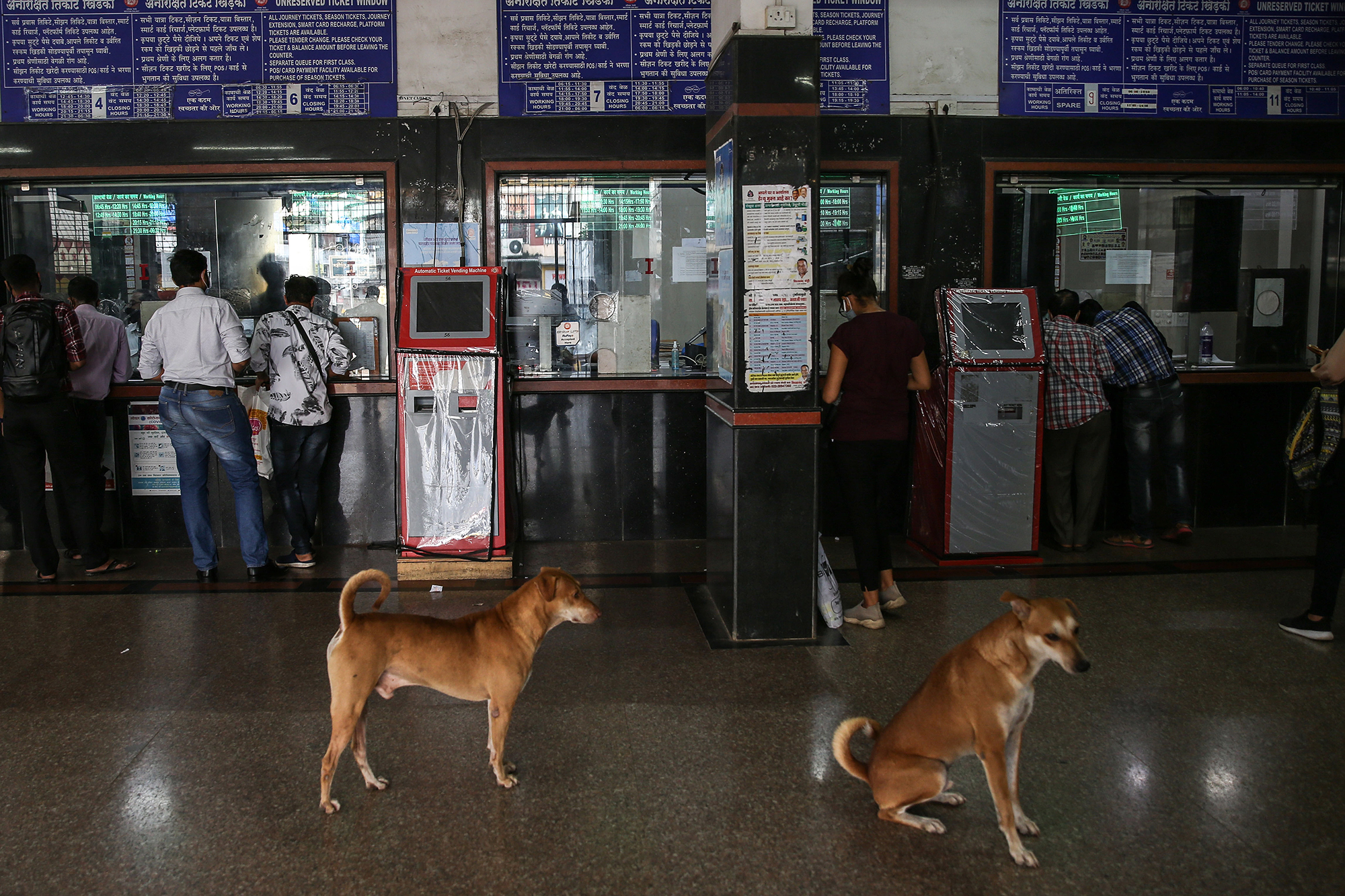
It’s unlikely there’s ever been a dog owner who looked at their beloved pooch — an animal whose life consists of chasing sticks, barking at windows, and lounging on couches — and thought, “They’d have no problem surviving without me.”
But what would happen to dogs if one day humans just ceased to exist? Cats, with their natural hunting skills, would probably do OK. But dogs, so utterly dependent on people for everything from food to how (and when) they defecate, don’t seem especially well-prepared for the challenges of self-sufficiency.
Or are they? That’s the question posed by bioethicist Jessica Pierce and evolutionary biologist Marc Bekoff in their new book, “A Dog’s World: Imagining the Lives of Dogs in a World without Humans” (Princeton University Press), out Tuesday.
“Posthuman dogs are going to be on their own in more important ways than just not having kibble and vet care,” they write. “They will have to navigate complex ecosystems with which they may be relatively unfamiliar and will have to form relationships with other dogs and other animals with whom they might coexist, cooperate, and compete.”
It’s a hypothetical scenario that isn’t just fodder for fantasy. Imagining a future for dogs without us “shines a light on who dogs are on their own terms, distinct from their cultural role as obedient (or not so obedient) pets,” Pierce and Bekoff write.
Dogs were first domesticated sometime between 40,000 and 15,000 years ago, according to archaeological data, and there are roughly 1 billion of them on the planet today, making them one of the most populous species on Earth. Although just 471 million of those dogs are pets, humans spent a record $103.6 billion on their care in 2020, according to the American Pet Products Association.

Dogs can be found on every continent, a staggering growth that wouldn’t be possible without us. “People often bring dogs with them to parts of the world where dogs otherwise would not live,” write Pierce and Bekoff.
Sheepdogs end up in Mexico City and greyhounds find homes in Alaska. Though Bernese mountain dogs aren’t well adapted to desert living, people in Phoenix, Ariz., still choose them as pets, “because they believe they have a mellow disposition or because they like the tricolor coats,” the authors write.
Humans have, in effect, set up dogs to fail, or at least be totally dependent on their owners. Temperature-controlled environments mean a dog’s coat, designed for specific environmental conditions, is meaningless (other than aesthetically).
The authors place much of the blame for dogs’ lack of survival skills on people, and not just because of their cushy living conditions. Breeding has inflicted a lot of damage on canines’ viability as a species.
Breeds that have trouble giving birth naturally and without human intervention — like bulldogs, who have unusually narrow birth canals and puppies with disproportionately large heads — would probably go extinct. “There is no posthuman climate or habitat in which bulldogs will survive,” the authors write. And much of the aesthetic “malware” that humans have introduced to dog populations via breeding — dropped hips, excessively long fur, stubby legs — could prove detrimental if not fatal.

“A pug can’t achieve as much variation in expression with his tightly curled tail or flattened, wrinkly face as a shepherd dog might,” write the authors, which would make it difficult to communicate effectively with wolves and coyotes. Their fate, sadly, would be as canine appetizers.
In general, the dogs most likely to survive will be (or will become) mutts, resembling today’s feral dogs, with a medium build, pointy ears, long snouts and reddish/brownish, medium-length fur. Nothing that would win Best in Show at Westminster, but a dog that would easily out-survive purebreds.
But everything we’ve passed on to dogs hasn’t just made them weaker. Dogs are naturally perceptive and whip-smart, write Pierce and Bekoff. And living with us has only enhanced that.
Dogs don’t just learn commands like “come, sit, stay” or “spin for a treat.” They also learn that “if they try something and don’t get rewarded, they should change their behavior and try something else,” the authors write.
After centuries of living among humans, dogs have become keen observers of human behavior. They’ve learned “through trial and error how best to shape their own responses to get what they need from us or to avoid unpleasant experiences.”
This ability to learn and adapt to novel changes, and do so quickly, would be tremendously advantageous in a world that’s radically different from what dogs had with humans.
But, overall, we’ve likely done dogs more harm than good — from discouraging behavior that would be beneficial in nature, such as barking, digging, sniffing and running fast, to breeding them for physical appearance over physical well-being.
“Dogs might just be better off without us,” the authors write. Without humans, dogs would be “freed from the constraints of being square pegs forced into round holes, of being dogs expected to live and act like furry people.”
